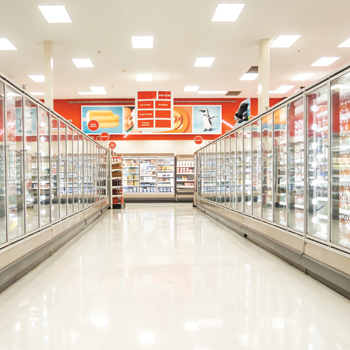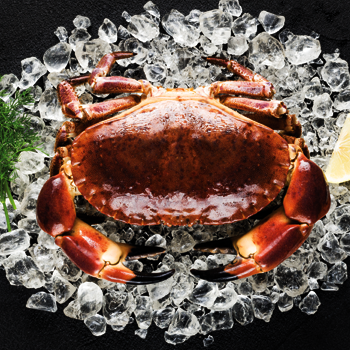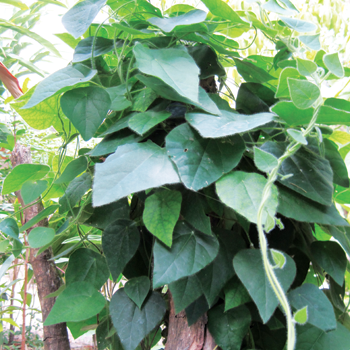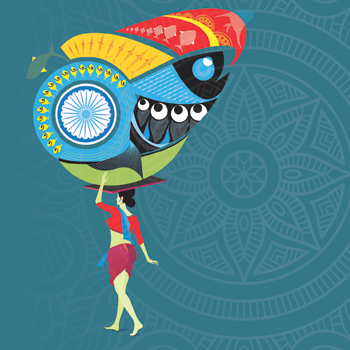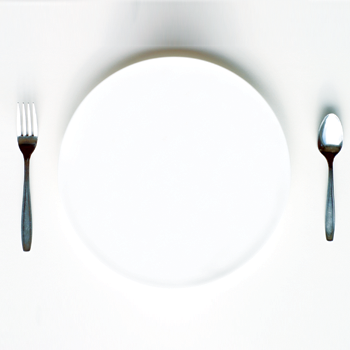ระบบห่วงโซ่ความเย็นของอินเดียมาแรง …เติมช่องว่างระหว่างธุรกิจต้นน้ำสู่ปลายน้ำ
ศูนย์วิจัยกสิกรไทย
Kasikorn Research Center
www.kasikornresearch.com
การเปิดเสรีธุรกิจ Cold Chain ในอินเดียตั้งแต่ปี2554 ทำให้ธุรกิจนี้เติบโตจากที่มีมูลค่าราว 3 พันล้านเหรียญ เพิ่มขึ้นสามเท่าตัวจนมีมูลค่า 9 พันล้านเหรียญ ในปี2558 มีผู้เล่นในตลาดไม่ต่ำกว่า 3,500 ราย แบ่งเป็นองค์กรขนาดใหญ่ราว 30 ราย ในจำนวนนี้มีไม่ถึง 10 ราย ที่ให้บริการ Cold Chain ครบวงจร นอกนั้นเป็นธุรกิจรายย่อยของเกษตรกรที่มีคลังสินค้าความเย็นของตนเอง โดยมีไม่กี่รายที่มีรถขนส่งสินค้าด้วยความเย็น จึงมีผลผลิตผักและผลไม้เพียงร้อยละ 3.8 เท่านั้นที่ใช้ระบบขนส่งด้วยห้องเย็น นับว่าต่ำมากเมื่อเทียบกับประเทศพัฒนาแล้วที่มีสัดส่วนถึงร้อยละ 85-90 ประเด็นดังกล่าว เป็นจุดเริ่มต้นของปัญหาราคาสินค้าอาหารในประเทศที่เร่งตัวสูงยามเกิดสภาพอากาศแปรปรวน สาเหตุหลักของปัญหาเงินเฟ้อที่หยั่งรากลึกในประเทศมายาวนาน โดยแตะระดับสูงใกล้เคียงร้อยละ 10 มาตั้งแต่ปี2552 แม้ว่าปัจจุบันจะปรับลดลงแต่ก็เป็นผลจากราคาน้ำมันที่ลดลง
สภาพแวดล้อมดังกล่าว ศูนย์วิจัยกสิกรไทย มองว่า ธุรกิจ Cold Chain ในอินเดียยังมีช่องว่างให้พัฒนาได้อีกมากจึงจะเพียงพอกับความต้องการในปัจจุบันและเตรียมรับกับความต้องการระลอกใหม่ที่เกิดจากนโยบายกระตุ้นการผลิตภาคเกษตรกรรมตามแผนงบประมาณประจำปี2559-2560 ซึ่งรัฐบาลทุ่ม งบประมาณเพิ่มขึ้นจากปีก่อนถึงร้อยละ 77 พร้อมทั้งนโยบาย Make in India ที่ได้เดินหน้ายกระดับการผลิตอาหารให้มีประสิทธิภาพ โดยคาดว่าธุรกิจ Cold Chain ในอินเดียจะคึกคักมากขึ้นอีกเท่าตัวแตะมูลค่า 18 พันล้านเหรียญ ในปี2561 จากที่มีมูลค่า 9 พันล้านเหรียญ ในปี2558 ซึ่งตลาดจะผลักดันให้เกิดความต้องการธุรกิจห่วงโซ่ความเย็นสมัยใหม่ (Modern Cold Chain) ที่ได้มาตรฐานสากลเพื่อให้เกิดประสิทธิภาพการบริหารจัดการตลอดห่วงโซ่การผลิต
แรงขับเคลื่อนจากภาคการผลิตผลักดันธุรกิจ Modern Cold Chain เร่งตัวแรงต่อเนื่อง
ภาคเกษตรกรรม ปศุสัตว์ ประมง และการแปรรูปอาหารของอินเดียมีสัดส่วนถึงร้อยละ 18.4 ของเศรษฐกิจ โดยอินเดียส่งออกสินค้าเกษตรอันดับ 6 ของโลก สามารถผลิตผักและผลไม้ได้เป็นอันดับ 2 ของโลก (รองจากจีน) มีกำลังการผลิตแต่ละปีราว 164 ล้านตัน และ 91 ล้านตัน ตามลำดับ ความพร้อมดังกล่าวดึงดูดให้นักลงทุนเข้ามาลงทุน ประกอบกับนโยบายปฏิรูปภาคเกษตรกรรมและ Make in India ที่มุ่งเน้นปฏิรูปภาคการผลิตเชิงลึก ตลอดจนการจัดตั้งสวนอุตสาหกรรมอาหารขนาดใหญ่ (Mega Food Parks) เพื่อสร้างความแข็งแกร่งในการผลิตอาหารอย่างจริงจัง โน้มนำผู้ผลิตอาหารรายใหญ่ของโลกเข้ามาจับตลาด ปัจจัยต่างๆ ล้วนกระตุ้นให้เกิดความต้องการ Modern Cold Chain อันจะเป็นโครงสร้างพื้นฐานสำคัญเชื่อมโยงภาคเกษตรกรรมสู่การผลิตอาหารและการบริโภคในระยะข้างหน้า
Since the Cold Chain Industry in India has been liberalised in 2011, this business has developed at a faster pace or rose by three folds in value from US$3 billion to US$9 billion in 2015. Over 3,500 players are in the industry. Of these, about 30 players are large entrepreneurs, which less than 10 entrepreneurs provide integrated cold chain service, while the remaining are small and medium-sized farmers, which have their own cold storage. Only few amounts of these have their own chill transportations. Thus, only 3.8 percent of vegetables and fruits have been shipped through cold storage. The percentage is very low compared to developed countries, which about 85-90 percent of vegetables and fruits have been shipped through cold chain system. This issue has become a beginning of high food price problem amidst the climate change, and main reason for the inflationary problem, which has been the country’s major difficult for so long. Inflation rate in India has climbed up to 10 percent since 2009 and remaining in a rate since then, despite the rate has edged down slightly following lower oil price in the global market.
Kasikorn Research Center foresees that cold chain business in India has wide gap for developing to serve demand of the current market following the India’s government policy to stimulate the production in agriculture sector during the 2016-2017 fiscal year, which the government has allocated more budget or an increase by 77 percent compared to the previous fiscal year. Moreover, the “Make in India” policy to promote and upgrade food production efficiency in India will also supported this business growth. The center expected that the cold chain industry in India will active and grow by another one fold to worth US$18 billion in 2018, from about US$9 billion in 2015. The market will drive up demand for the “Modern Cold Chain” business, which have high international standard to achieve effective management throughout the production chain.
Motivation from the manufacturing sector pushes up the Modern Cold Chain
India’s agricultural, livestock, fisheries and food processing sectors are accounted for 18.4 percent of economy. India is the world’s sixth-largest exporter of vegetables and fruits, and the world’s second largest producer (after China). Each year, the production capacity meets 164 million tonnes and 91 million tonnes, respectively. With this high figure, it can attract foreign investors to invest in the country. The government’s policy to reform the agricultural sector and “Make in India” policy, which focuses on deepening restructure the manufacturing sector as well as the establishment of a Mega Food Parks to strengthen food production, those factors have stimulated the world’s leading food producers enter to the market. Those factors have also increased the demand for modern cold chain, major infrastructure linking agriculture to food production and consumption sectors in the future.
